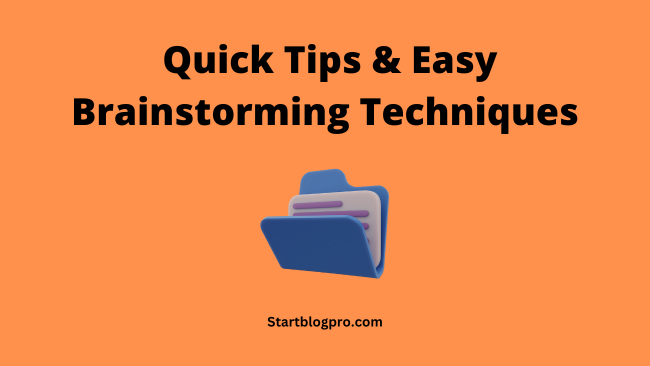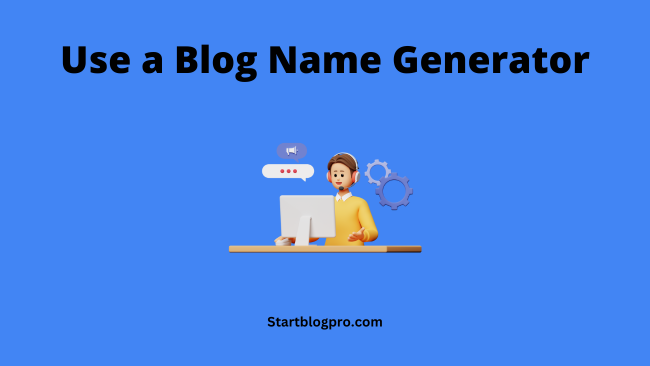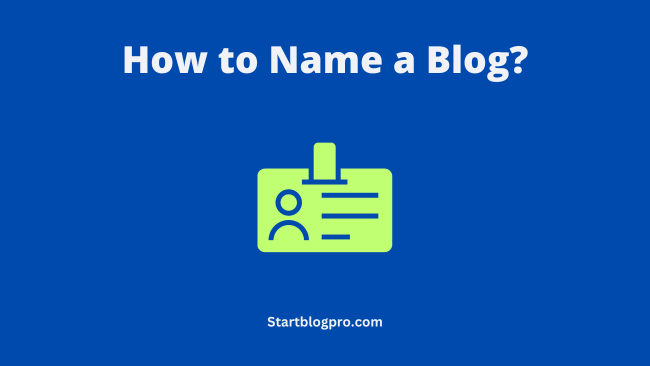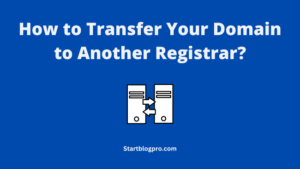If you’re planning to start a blog, one of the most important decisions you’ll make is choosing the perfect name for it.
Your blog’s name plays a crucial role in defining your brand and attracting readers. With millions of blogs on the internet, standing out from the crowd requires a unique and memorable name.
In this comprehensive guide, we’ll walk you through the process of naming your blog, from brainstorming ideas to ensuring your blog name is SEO-friendly.
Let’s start by answering the question. Why choosing the right blog name is important?
Why Choosing the Right Blog Name Matters

Before we dive into the strategies for naming your blog, let’s address why it’s essential to choose the right blog name.
Your blog name is the first impression readers will have of your brand, and it can significantly impact your success.
Here are a few reasons why it matters:
- Brand Identity: Your blog name represents your brand and sets the tone for your content. It should reflect your unique personality, values, and niche.
- Stand out from the competition: With over 500 million blogs on the internet, having a unique and memorable name is essential to differentiate yourself from other bloggers.
- Memorability: A memorable blog name is easier for readers to recall and recommend to others. It should be catchy, distinctive, and stand out from the crowd.
- Search Engine Optimization (SEO): A well-chosen blog name can boost your search engine rankings. By incorporating relevant keywords, you can increase your chances of appearing in search results and attracting organic traffic.
- Attract and keep readers: A compelling blog name can pique readers’ curiosity and encourage them to click on your blog. It should convey the value and relevance of your content, enticing readers to explore further.
Now that we understand the importance of choosing the right blog name, let’s dive into the strategies for coming up with a memorable and SEO-friendly name for your blog.
Strategy 1: Brainstorming Techniques

When brainstorming blog name ideas, it’s helpful to employ some quick tips and simple techniques to get your creative juices flowing.
Here are a few strategies to consider:
1. Read, Read, Read!
Immerse yourself in books or articles related to your blog niche. Reading can stimulate your imagination and help you discover potential blog name ideas. Look for words or phrases that catch your attention and resonate with your brand.
2. Harness the Power of a Thesaurus or Dictionary
Don’t underestimate the power of a good thesaurus or dictionary. These resources can provide you with a wealth of inspiration and help you uncover unique and interesting words related to your blog niche.
Experiment with unique word combinations and choose the perfect one.
3. Embrace Alliteration
Alliteration is a literary device that involves using the same sound or letter at the beginning of adjacent or closely connected words. It can create a memorable blog name.
Experiment with different words and see if you can come up with an alliterative that captures the essence of your brand.
4. Get Punny
Puns can add a touch of humour and wit. They can also make your blog more memorable and shareable. Incorporate relevant puns or wordplay into your blog name to create a playful and engaging brand.
5. Inject Humor
Using humour in your blog name can make it more appealing and memorable. A funny blog name can leave a lasting impression and make readers more likely to click and explore your content.
Consider incorporating humour that aligns with your brand’s tone and style.
6. Combine Unrelated Words
Combine two words that are unrelated, or opposite to create an intriguing and memorable blog name. This unexpected combination can make your blog stand out and pique readers’ curiosity.
7. Use Your Own Name or Nickname
Using your own name or nickname can be a powerful branding strategy, particularly if you’re building a personal brand or offering a service. It adds a personal touch and helps you establish authority and credibility in your niche.
8. Brainstorm Words Related to Your Blog Niche
Identify the keywords and concepts that are central to your blog niche. Brainstorm a list of words and terms related to your niche, and look for creative ways to incorporate them into your blog name.
This strategy helps you establish relevance and clearly communicate your blog’s focus.
9. Take a Break and Try a Blog Name Generator
If you’re feeling stuck or overwhelmed, take a break and let your mind rest. Engage in activities that inspire you and allow your creativity to flow naturally. Alternatively, you can try using a blog name generator for fresh ideas.
These tools generate a variety of blog name suggestions based on your input and can help you find the perfect one that resonates with your brand.
Remember to keep your target audience in mind throughout the brainstorming process. Consider what will resonate with them and what will make your blog name appealing and memorable to them.
Strategy 2: Research Your Blog Niche

Thoroughly researching your blog niche is an essential step in naming your blog. Understanding your niche, your competitors, and your target audience will inform your decision and help you choose a name that aligns with your brand’s identity and goals.
Here’s how you can conduct deep research into your blog niche:
- Identify Prominent Figures: Research other prominent bloggers or influencers in your niche and analyze their branding strategies. Look at their blog names, their target audience, and how they position themselves in the market.
- Analyze Branding Trends: Identify any branding trends or patterns within your niche. Pay attention to the types of blog names that are popular and effective. This analysis will give you insights into what works and what doesn’t in your niche.
- Understand Your Target Audience: Gain a deep understanding of your target audience’s needs, desires, and problems. This knowledge will help you create a blog name that resonates with them and addresses their specific needs.
- Differentiate Yourself: Identify what sets you apart from your competitors. Determine your unique selling point or value proposition. This information will guide you in choosing a blog name that highlights your unique qualities and differentiates you from the crowd.
By conducting thorough research, you’ll gain a better understanding of your niche and position yourself for success. This knowledge will influence your choice and help you create a brand that stands out.
Strategy 3: Think About Your Blog’s Purpose

Consider why you want to blog and what message you want to communicate to your readers. Your blog’s purpose will shape your brand identity and influence your blog name.
Here are a few questions to ask yourself:
- What is Your Core Message?: Define the primary message or theme of your blog. What do you want readers to take away from your content? Your blog name should reflect this core message and make it clear to potential readers.
- How Do You Want Readers to Feel?: Think about the emotions you want to evoke in your readers. Do you want them to feel inspired, entertained, educated, or empowered? Your blog name should convey the desired emotions and set the tone for your content.
- What Sets You Apart?: Consider what makes your blog unique and how you can differentiate yourself from others in your niche. Your blog name should reflect your unique perspective, expertise, or approach.
- Who is Your Target Audience?: Understand your target audience and what they’re looking for. Your blog name should resonate with your ideal readers and attract their attention.
By clarifying your blog’s purpose and considering these questions, you can choose a blog name that aligns with your goals and speaks to your target audience.
Strategy 4: Identify Strong Branding Opportunities

Branding is a critical aspect of building a successful blog. Your blog name plays a significant role in establishing your brand identity. Here are a few considerations for identifying strong branding opportunities:
- Choose the Right Domain Extension: While .com is the most recognized and widely used extension, consider other extensions that may be more relevant to your niche or target audience. For example, if you’re targeting a specific country, a country-specific domain extension may be more suitable.
- Pronunciation and Spelling: Ensure that your blog name is easy to pronounce and spell. Avoid complex or confusing names that may hinder readers from finding your blog or sharing it with others.
- Avoid Copyright Infringement: Conduct a thorough search to ensure that your blog name doesn’t infringe on any existing trademarks or copyrights. Choose a name that is unique and distinctive to avoid legal complications.
- Consistency Across Platforms: Consider how your blog name will translate across different platforms and social media channels. Aim for consistency in your branding to create a cohesive and recognizable identity.
By identifying strong branding opportunities, you’ll be able to create a blog name that resonates with your target audience and leaves a lasting impression.
Strategy 5: Incorporate Keywords for SEO

While keyword domains may not have a significant impact on SEO, incorporating relevant keywords in your blog name can still benefit your search engine rankings.
Here’s how to optimize your blog name for SEO:
- Keyword Research: Conduct keyword research to identify relevant keywords related to your blog niche. Use tools like Google Keyword Planner or SEMrush to discover popular keywords with high search volume.
- Keyword Focus: Choose a primary keyword that accurately represents your blog’s main topic or focus. We should incorporate this keyword into your blog name to signal to search engines and potential readers what your blog is about.
- Secondary Keywords: Sprinkle secondary keywords throughout your blog name to provide additional context and relevance. These keywords should support your primary keyword and help define your blog’s niche.
Remember to balance SEO and brand identity. Your blog name should be SEO-friendly, but it should also be memorable, unique, and reflective of your brand.
Strategy 6: Use a Blog Name Generator

If you’re struggling to come up with blog name ideas, consider using a blog name generator for inspiration. These tools can generate a wide range of potential blog names based on your input.
Here are a few popular blog name generators to explore:
- Ryan Robinson’s Domain Name Generator: This AI-powered tool generates unique and available blog names to help you find the perfect match for your brand.
- SmartWP’s Blog Name Generator: SmartWP’s tool provides immediate results based on your input. It only shows available domain name suggestions and offers a clutter-free experience.
- Panabee: Panabee offers domain search, suggestions, and word variations. It also checks for app and social media handles to ensure consistency across platforms.
- Name Station: Name Station allows you to host a contest to crowdsource blog name ideas. It also provides a wide range of categories and word variations to help you find the perfect fit.
- Looka: Looka’s business name generator can also be used for blog name ideas. It offers a variety of options and allows you to source logo designs as well.
While blog name generators can provide valuable suggestions, remember to consider your brand identity, target audience, and niche relevance when choosing a blog name.
Examples of Genius Blog Names

To inspire your blog naming process, here are some examples of genius blog names across various niches:
Personal Finance Blog Name Ideas & Examples
- Smart Money Moves: This blog name communicates the focus on personal finance strategies and making intelligent financial decisions.
- The Wealthy Investor: The name suggests a blog dedicated to wealth-building and investment advice.
- Frugal Family Finance: This blog name shows a focus on budgeting and managing family finances.
- The Money Maven: This blog name conveys expertise and knowledge in the realm of personal finance.
- Millennial Money Mastermind: The name targets millennials and implies a community-focused blog discussing financial success for this generation.
Travel Blog Name Ideas & Examples
- Wanderlust Chronicles: This name captures the essence of travel and a sense of adventure.
- The Nomadic Wayfarer: It evokes a sense of wanderlust and a free-spirited approach to travel.
- Roaming Gypsy: This name creates a strong connection to the travel lifestyle and a desire for exploration.
- The Travel Insider: The name suggests a blog that provides insider tips and guides for travellers.
- Jetsetter Diaries: It conveys a sense of luxury and sophistication associated with frequent travellers.
Food Blog Name Ideas & Examples
- The Culinary Chronicles: This name shows a blog focused on sharing culinary experiences and stories.
- Gourmet Gastronomy: It suggests a blog dedicated to exploring the world of gourmet food and fine dining.
- The Savory Spoon: This name conveys a focus on cooking and sharing delicious recipes.
- Foodie Wanderlust: It combines a passion for food with a love for travel, suggesting a blog that explores global cuisine.
- The Kitchen Diaries: This name implies a blog that documents culinary experiments and adventures.
Conclusion
Choosing the right blog name is an important step in building your online presence. By following the strategies outlined in this guide, you’ll be able to come up with a compelling and SEO-friendly blog name that resonates with your target audience.
Remember to research your blog niche, consider your blog’s purpose, identify substantial branding opportunities, and incorporate keywords strategically.
Whether you choose a punny and humorous or a more straightforward and descriptive one, your blog name should reflect your brand identity. It should set you up for success in the competitive blogging world.
Now it’s time to get creative and start brainstorming your perfect blog name. Good luck on your blogging journey!


![Read more about the article How to Choose the Best Domain Registrar [2024]](https://startblogpro.com/wp-content/uploads/2022/08/best-domain-registrar-300x169.png)
